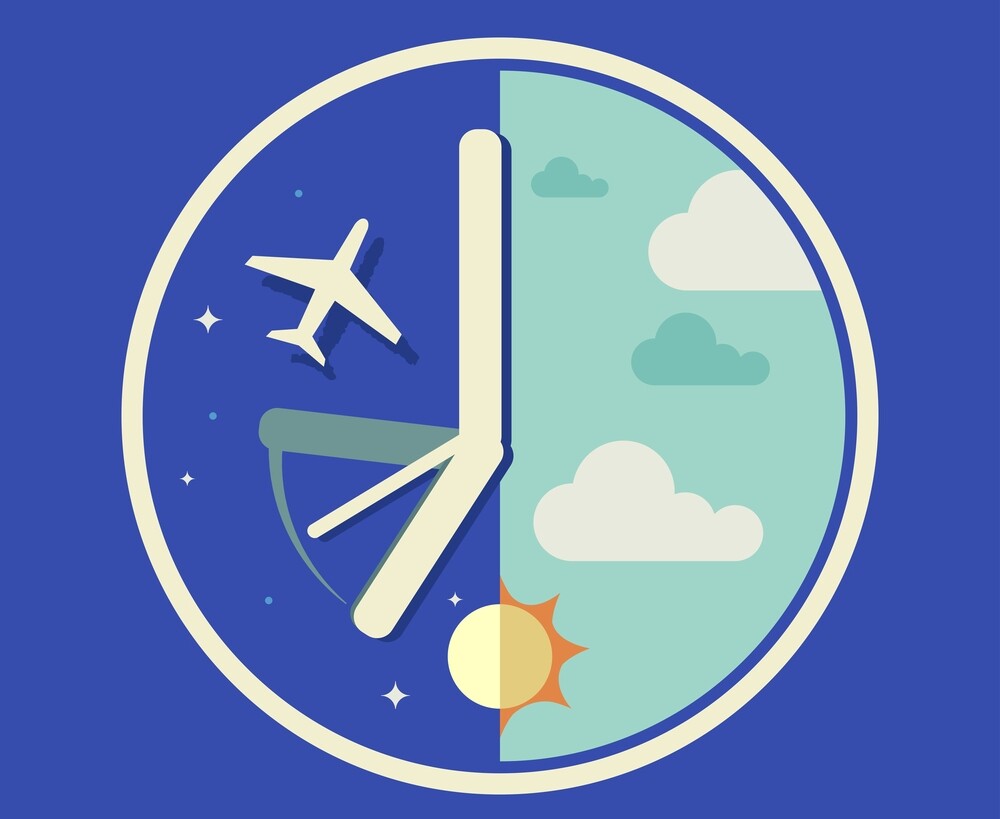A jet lag usually lasts only a few days, but it makes the arrival more relaxed. But what can you do about it after and before the flight? The best tips against the jet lag.
Wanderlust, anticipation, jet lag? When flying to far away countries, the jet lag is already sitting in wait. Why this is so, what symptoms it causes and how you can control it.
Jet lag symptoms
Anyone who has ever flown by plane to countries with a different time zone has probably already made the acquaintance of jet lag. Typical symptoms are:
- Difficulty falling asleep and insomnia
- Tiredness
- Lack of concentration
- Loss of appetite
- Disturbed well-being / fatigue
- Mood swings
- Digestive problems
Not every traveler with jet lag also suffers from all symptoms, some cope with the changes better than others.
Why do we have jet lag anyway?
Roughly speaking, our inner clock has gone out of sync. Processes in our body repeat themselves according to a rhythm, determining, for example, when we are particularly efficient or when we are tired. This is because our biological clock is also in tact with the times of day and reacts to brightness and darkness. If our sleep-wake rhythm is disturbed by flying to a different time zone, it will result in a disturbance of the same. There is also a significant difference in the direction in which we fly…
The direction decides
… how bad the jet lag feels. If we fly west, we are flying with the sun, so to speak – our day is getting longer. But if we fly east, our day becomes shorter, there is no light, and the organism can no longer maintain its usual rhythm. The outer timers and the inner clock no longer correspond.
If the time difference is one or two hours, the body usually adjusts to the new time relatively easily. However, this is no longer so easy for longer distances and longer flights. Which tips will help, you will find out in the next section.
Jet lag: The best tips
How severe the symptoms are is individual. Some have stronger symptoms than others. As a rule of orientation, you can remember that it takes about one day per jet lag hour until the inner clock and the outer day-night rhythm are synchronized again. Until then, you can follow these tips to treat jet lag:
Tips for a flight to the west
- A few days before the start of the trip, go to bed an hour later and get up an hour later.
- Adjusting the meals before departure helps to get a better grip on the jet lag. Eating later than usual when heading west.
- Naps (about 20 minutes) on the plane and after arrival are fine.
- Also go into the daylight in the evening at the airport.
Tips for a flight to the east
- A few days before the start of the trip, go to bed one hour earlier and get up one hour earlier. Fill up with light in the morning.
- It is best not to sleep during the flight, so that tiredness sets in more quickly on arrival.
- Go into the daylight at the airport in the morning.
These tips will help upon arrival
- If you wear a wristwatch, set it to the current local time. Smartphones usually change over automatically.
- Rest is in order! Certainly you want to explore the holiday destination as long and immediately as possible, but it is advisable to take it easy for the first two days and not to overexert your body.
- Live according to the local time, so try to adapt to the new daily rhythm already. Eat, for example, according to the local time, and use (healthy) snacks for those who are hungry.
- Activities in the fresh air also help to get a better grip on jet lag.
Avoid double jet lag
If you only have a short stay, e.g. as a stopover or short trip, it doesn’t make sense to adjust to the new rhythm, because when you fly back again, you will have another jet lag …
Melatonin as a jet lag savior?
The hormone melatonin controls the sleep-wake rhythm in the body, therefore it is also called sleep hormone. Melatonin preparations are said to promote sleep, but there are no studies available to prove the effect.

